|
Hasegawa's
1/48 scale
Nakajima Ki-43 Type I Hayabusa (Oscar)
by Thomas Wielecki
|
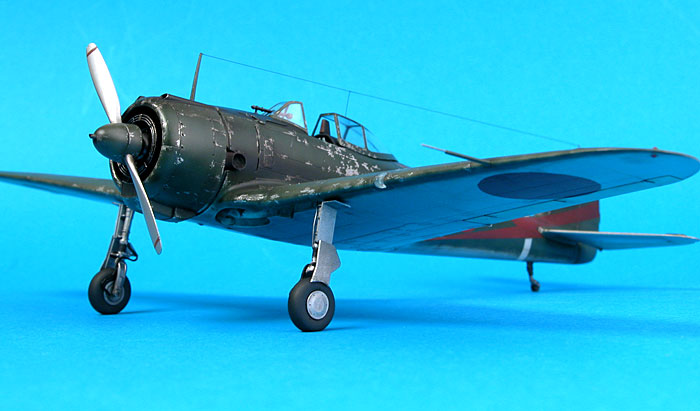 |
|
Nakajima Ki-43-I Hayabusa
(Oscar) |
images by Brett Green

Hasegawa's
1/48 scale Oscar Type I is available online from Squadron
The Obsession...
Chips, chips, chips and more chips.
The more I pored over wartime photographs of Japanese aircraft, the
more missing paint I saw. After a while a certain pattern started to
emerge. The paint seemed to come off in leaves and whole sheets, as
though a mischievous apprentice smeared grease all over the airframe the
night before the painters top coated the planes in the factory.
The more you look the more you see. In my case it became an obsession.
My girlfriend would sometimes wake me up from staring at the one picture
after a whole chunk of time had gone missing. Anyway, my point here is
that the missing paint took on a particular shape; it was hard edged,
angular and quite complex. Sort of like a random scattering of maple
leaves blown into gutters (panel lines) and along walls in autumn.
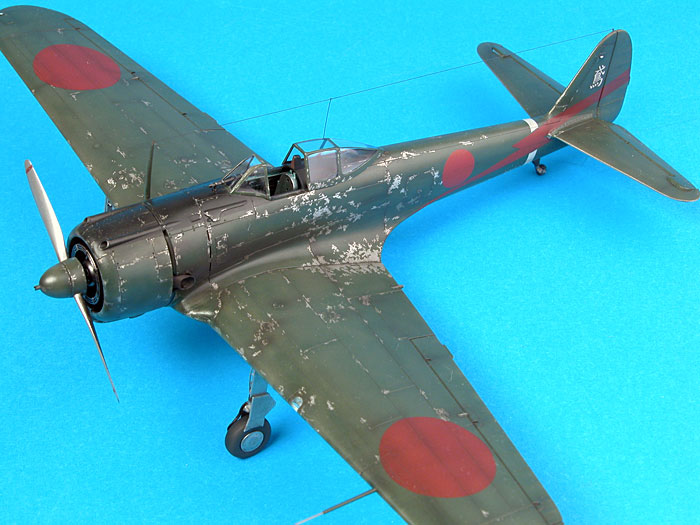
Being incredibly fascinated by this whole “missing paint” phenomenon I
needed a subject to replicate the look on. A Zero was too common, and as
much as I wanted a Betty I couldn’t find one right now. The little Oscar
sitting at the bottom of a pile of Hasegawa boxes in the Hobby shop
called out “take me” in a low whisper. Perfect: simple elegant
lines, unusual subject and plain colour scheme.
After the cockpit was completed and the airframe together, sanded,
polished and ready for painting I began practicing the art of chipping
on bits of plastic. Sand paper of various grades scratched the topcoat
off; it looked wrong. Silver pencils and fine brushes gave me round
blotches, not angular random shapes. More like an oak leaf, not the
maple leaves I was after. A fresh blade gently lifting tiny bits of
freshly dried paint did the trick. It was tedious work but at least this
way I had full control on how much paint I wanted to chip off here and
there.
For this process the base coat, or metal skin of the aircraft needed to
be less “chippable” than the green colour applied over it. You don’t
want to see grey Hasegawa plastic peeking through the metal; not very
realistic, is it? Again, milking various people’s minds and reading up
on other modellers’ experiences finally gave me a few leads. I settled
on Tamiya bare-metal silver (AS-12) sprayed directly from the aerosol
can. This is a laquer based paint and therefore it “bites” into the
plastic rather than just sit on top of it. That’s the theory anyway. In
hindsight I should have drained some of the paint into the airbrush and
applied it that way. The surface turned out like fine orange peel. Never
mind, next time it’ll be better.
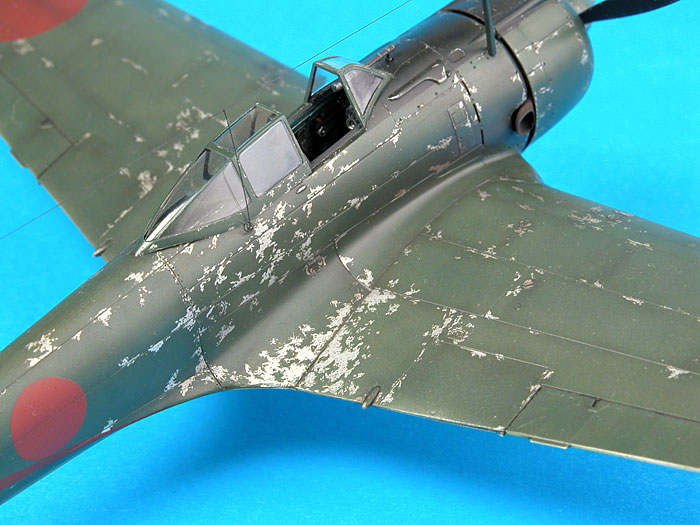
The particular Oscar I chose to model was an Imperial Japanese Army
aircraft. Gunze acrylics were used. IJA code number H-60 was mixed with
a few drops of IJN H-59 (a Japanese Navy colour) to darken it ever so
slightly. A thin patchy coat went on. I stress THIN. This is only a base
that acts a bit like pre-shading. I applied it translucent on top; ie
the top of the wings and stabiliser and along the top surface of the
fuselage. It was slightly thicker where the sun doesn’t attack quite so
fiercely; ie fuselage sides, fin and rudder. Then as the final coat the
Army colour H-60 was very delicately lightened with a few drops of
white. Again a patchy thin coat went over the darker base. The
difference in colours is slight but enough to break the flatness of a
featureless green.
Immediately after the greens were applied I took to the Oscar with a
sharp blade and chipped away. The paint is still soft and comes off
easily without disturbing the bare metal. By now I was so sick of it I
left it for a few days.
The wheel well colour was a mix of translucent blue and green watered
down with acrylic thinner and brushed onto the bare metal. It kind of
acts as a wash flooding the little nooks and crannies automatically
giving a weathered effect.
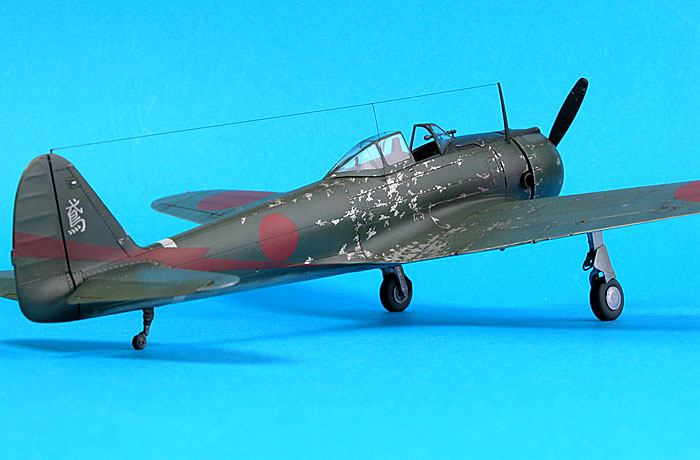
Hinomarus, red lightning bolt on the fuselage sides, fuselage band
and black anti glare panel were masked off and airbrushed on. The only
decals are the Japanese character on either side of the fin. Scheme two
from Aeromaster sheet number 48-381 (Ki-43 IJAAF Falcons Pt. III) was
the inspiration. Apparently it was flown by Sgt. Isamu Sasaki who
amassed 38 victories and survived the war.
I could go on and on about other detailing like the exhausts and
their rusty effect and break lines being thicker where the rubber hose
attaches to the metal hose and raising the flaps from the down-only
position provided by Hasegawa.
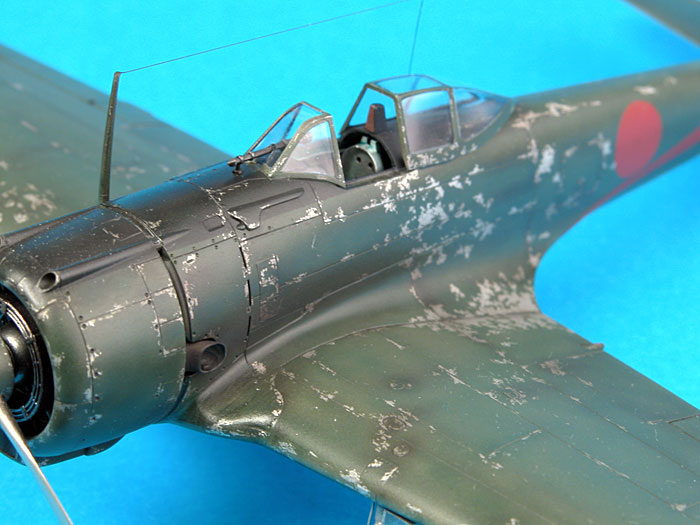
But I’ve had enough for one session and so have you I’m sure.
Model and Text Copyright © 2004 by
Thomas Wielecki
Images Copyright © 2004 by
Brett Green
Page Created 19 May, 2004
Last Updated
27 May, 2004
Back to
HyperScale Main Page
|
Home
| What's New |
Features |
Gallery |
Reviews |
Reference |
Forum |
Search